There has been a marked increase in the number of people taking camping breaks and enjoying the countryside since the Covid-19 lockdown restricted the potential for overseas holidays.
I’ve been a keen camper for many years, and love the feeling and freedom of sleeping under canvas (though it’s usually polyester or polyamide in reality these days).
I enjoy both base camping, which I class as pitching your tent on established campsites with facilities such as toilets, showers and washing facilities, and wild camping, which seems to have morphed into backpack camping terminology to differentiate it from irresponsible ‘fly camping’ which also unfortunately experienced a growth over the past few years.
For this review, I class wild camping as carrying your gear to a remote location, usually in the hills, pitching for one night and leaving no trace of your stay.
Some of the gear in this feature I’ve classed as suitable for wild camping; some for base camping and van camping, and some will also have a use at home.
So here’s my view of camping accessories that make life in the tent a little more pleasant experience.
Rab Stratosphere Pillow
£40
118g
Packed size: 13cm x 7cm
Inflated size: 36cm x 26cm x 10 cm
Country of manufacture: China
Lightweight camping, especially backpacking, involves making a considered choice on what to pack and what to leave out. The Stratosphere Pillow is so small and light that it has become an essential on my multi-day walks.
I’ve found a pillow is one of the luxuries that really makes a difference to how well I sleep in the tent. This inflatable model stuffs into a very small bag that takes up hardly any room in the rucksack. It has a two-part valve with a non-return section that allows easy inflation. To deflate, you open the main part of the valve to easily expel all the air. I found inflating the pillow to just less than fully gave the right thickness with just a little yield to aid comfort. The fully inflated thickness is 10cm.
The upper surface of the Stratosphere is a soft, wicking polyester fabric that feels comfortable on the face. The lower surface is brushed recycled polyester, which helped stop the pillow sliding about. The pillow also contains Rab’s Stratus insulation on its top to provide a little warmth. The pillow has a slight scallop to accommodate the neck.
The Stratosphere Pillow is fluorocarbon-free.
I’d class this as an essential piece of camping kit for my backpacking walks. It works well and is money well spent for the comfort it provides. The hardest aspect of using it is getting it back in its very small soft case.
Best uses: base camping; wild camping; backpacking; trekking; glamping; van camping
Cocoon Ripstop Silk Expedition Liner
£89.95
132g
Size: 225cm x 88cm
Packed size: 15cm x 7cm
Country of manufacture: China
This silk liner was another item that added very little weight and bulk to my pack, but which proved very useful.
As well as keeping your sleeping bag cleaner, the Ripstop Silk Expedition Liner provides extra warmth which, during a particularly cool summer period on the Pennine Way, was much appreciated.
Cocoon weaves a ripstop grid pattern into the silk, giving it added strength. The Expedition Liner is available in three sizes. I tested the largest, size three, which is about 20g heavier than the smallest, size one. The liner has a boxed foot section and also a drawstring hood. The nylon stuffsack is tethered to the liner, meaning it doesn’t get lost or forgotten on camp. There are loops at the hood and foot to head to hang the liner or attach it to a sleeping bag, though I found the easiest way of using the silk liner was to get into it first and then slide into my sleeping bag.
Cocoon reckons you can gain up to 5.3C in warmth by using the liner and, though I wasn’t able to test the actual figure, it certainly felt warmer in my bag than sleeping without it. Even wild camping high on the Cheviots, I was warm enough in my Cocoon liner and lightweight down bag.
Silk doesn’t come cheap, and the Cocoon liner is an expensive item, which makes it probably a consideration for those spending time in the high mountains or in cold conditions. But if your budget runs to the price, it’s a very useful, lightweight addition to the camp kit.
Best uses: base camping; wild camping; trekking; backpacking; glamping; van camping
Montane Icarus Hut Slipper
£55
158g a pair
Sizes: XS-XL (for shoe sizes 3½-13½)
Country of manufacture: Vietnam
These slippers are ideal to slide into after a day’s walking or while just pottering around the campsite.
The toughened sole, made from Hypalon, extends upwards a little at the toe, heel and side rands of the slippers and has a slip-resistant finish. There’s a quilted insole and the PrimaLoft Black ThermoPlume insulation – a ‘blown’ material – helped keep my feet warm on cool evenings at camp.
The outer shell is made from Pertex Quantum, which resisted a little damp, and the PrimaLoft synthetic filling still maintained most of its insulation even when traipsing through dew-coated grass on the way to the campsite facilities.
The foot opening is elasticated and the slippers have small pull-on loops at the heels. The lining is soft microfleece, which feels snug against bare feet.
These are not the kind of item I personally would pack on a lightweight backpacking trip, even though they weigh less than 160g a pair, but for base camping, campervanning or caravanning, they’re ideal, avoiding the need to keep changing footwear on the site. They’re even handy at home to slip on after a local walk or just on a cool evening to keep your feet snug.
Best uses: base camping; glamping; van camping; home use; hostelling
Soto Thermostack Cook Set Combo
£71.95
315g
Country of manufacture: Japan/China
This is a well designed, top-quality little cooking set that’s ideal for backpacking. It doesn’t include a stove, but I used my little canister-top stove with the set. Depending on your model, you should be able to stash it inside the set.
Packed away in its insulated carrying case, the combo stands 13cm tall, with a diameter of 10cm. The case has a mesh top, with drawstring and is made from a vinyl-type material with a reflective aluminium lining.
Inside, there’s a 750 ml hard anodised aluminium pot which will sit on your stove supports. I found the capacity easily enough for cooking at camp, whether on the hill or at base. The pot has a plastic lid with strainer and drinking slot. A nice aspect of the set is that once you’ve cooked your meal, you can put the pot into the insulated case, helping keep it warm and stopping you burning your hands as you eat from it.
There’s a 400ml titanium cup which also has a plastic lid with a drink slot. The lid also fits a second, 350ml, cup in aluminium with a silicone seal which enables it to be placed firmly into the larger cup to form a double-wall drinking vessel. The set is completed by a lightweight lifting handle which grasps the cooking pot firmly.
The design is clever, the quality is good and the whole kit tips the scales at a little over 300g.
I found it really useful to have three separate vessels at camp. I could boil water for a drink; decant some of the water into one of the cups for a hot drink, and then use the remaining water for cooking or rehydrating a meal.
Definitely a piece I would pick for backpacking or lightweight camping, but it would also be useful at basecamp, especially if space is at a premium.
Best uses: base camping; wild camping; backpacking; trekking; glamping; van camping
Super Sparrow Ultralight Water Bottle 750ml
£18.03
339g
Size: 26cm x 8cm
Country of manufacture: China
Although it’s described as a water bottle the Super Sparrow 750ml vessel actually performs well as a vacuum flask, thanks to its double-wall construction and air-tight seal.
Super Sparrow also claims its manufacturing process allows for a thinner wall while maintaining strength, resulting in a 25 per cent weight loss over similar aluminium bottles. The bottle is BPA- and BPS-free, two chemicals that have caused health concerns.
The brand says its Ultralight Water Bottle will keep cold drinks cool for up to 24 hours and hot drinks warm for up to 12 hours. We didn’t test this to the limit, but my coffee was still acceptably warm after six hours.
The bottle is quite tall and slim. The screw cap has a long thread and didn’t leak during testing. It has a flexible loop handle for carrying or perhaps hanging from a carabiner. The flask was sturdy and stood up to knocks during the test.
It was useful for gathering water at camp, plus as a vacuum flask for hot drinks, but it also has more general usefulness as an everyday water bottle. There are lots of different designs and colours and the bottles are very competitively priced.
Best uses: base camping; glamping; van camping; workplace; urban; home use
Ticket to the Moon MoonBlanket Compact
£107.89 (subject to current euro exchange rate)
848g
Size: 205cm x 135 cm
Country of manufacture: Indonesia
The MoonBlanket comes from hammock specialists Ticket to the Moon and the compact version I tested is the smallest and least expensive of three models.
At its simplest, it can be used as a top quilt if you’re using a hammock, and it has a comfort rating of 5C. It uses synthetic Ecodown insulation, produced from 100 per cent from recycled PET and is suitable for vegans.
But it’s more sophisticated than that. Most of my camping takes place in the hills, where there are few opportunities to use a hammock, so I mostly used the MoonBlanket for extra warmth on those cool nights, of which there were plenty, even in summer.
Fastening the press-studs on the back of the blanket enables it to be stepped into, and pulled up to form a poncho, with your head through the zipped opening. There are fastenings at the side and you can tuck the excess at the back into the blanket to keep things neat. There’s a kangaroo pocket on the front I used as a handwarmer, though when things got cooler, it’s easy to bring the arms and hands into the blanket to keep everything snug.
There’s a shockcord with spring toggle fastening and baffle at the bottom of the MoonBlanket, which makes it suitable too to be used as a bivvy bag on dry nights. A similar cord at the top of the blanket enables it to be cinched around you for maximum warmth.
If things warm up, there’s plenty of scope for venting the blanket.
Ticket to the moon also suggests the MoonBlanket can be used as a changing robe and wrap for swimmers and stand-up paddleboarders.
The outer shell is 20 denier nylon, while the lining is 70 denier nylon. The blanket is machine washable and comes with a zipped stuffsack.
The MoonBlanket Compact is a versatile addition to camping kit, whether you’re a hammock user or not. For me, the hardest part of using it was figuring out how to fasten and cinch the various press-studs, straps and other fastenings to shape it into the particular version I wanted at the time. But once done, it proved a welcome warming camp friend.
Ticket to the Moon has strong ethical credentials. The brand says it has been pioneering fair trade and production standards in the outdoor, travel and leisure industry. It adds profits are shared with employees and nurture their very own foundation, which was established in 2009. The foundation’s main purpose is to support the Sumbanese Kodi tribe in east Indonesia where they have developed health, educational, cultural and development aid programs, successfully helping the local community with building new infrastructure and education facilities, malaria prevention programs and access to clean water.
Best uses: base camping; glamping; van camping; hammocking; home use
LifeStraw Peak Series Personal Straw
£34.95
70g
Size: 20cm x 3cm
Country of manufacture: South Korea
The Peak series from LifeStraw is the upgraded version of the personal water filter, with improved flow rate and better performance in removing sand and silt.
It’s a boon for backpackers and wild campers. It’s small, weighs very little and could be a lifesaver when you’re on the hills. Clean water is an absolute essential in the outdoors and, though you can gamble on taking water direct from streams, particularly on higher ground, it’s good to have the reassurance of knowing you’ve removed potential pathogens from your water.
The Peak Series Personal Straw removes pretty much all bacteria such as E-coli; parasites such as cryptosporidium; and also microplastics, increasingly found in water sources, silt, sand and cloudiness. The pore size of its filters is 0.2 microns and the device will treat up to 4,000 litres of water. Once it has reached the end of its life, it will stop allowing water to pass through.
It’s important to note that, as with most filters, the LifeStraw Peak Series won’t remove viruses, which are much smaller than the filter diameter.
Before using the straw for the first time, you draw five quick, strong sips to start the flow of the device. In the outdoors, the LifeStraw can be backwashed simply by blowing back through the straw.
The Peak filter straw has a tethered cap at the top, covering the mouthpiece. Another tethered cap covers the bottom of the straw. This has a screw thread, enabling it to be removed. This reveals another screw thread which can be used to attach to a standard disposable bottle neck or LifeStraw’s or indeed other brand’s squeeze bottles. There’s also a hose connector for gravity-feed systems.
Unscrewing the bottom cap also makes it easier to insert the straw into a drinks bottle with a fairly narrow neck.
The simplest way of using the Peak Series Personal Straw is to open the bottom cap, dip the device into your source water and suck up through the straw. This works fine if you can easily access the stream or lake, but is less convenient if, as is often the case, the banks of the stream prevent lying down or crouching low enough. It’s also not great in wet weather. I found my preferred method was to scoop the water into a cup or bottle and then put the straw into it to drink.
I also used a plastic bottle to pass water through the filter using gravity and refill my reservoir. This took a while but meant I could use the full capacity of my reservoir, knowing the water had been filtered.
Once I finished using the Peak Personal Straw, the caps went on each end, preventing leaking. The LifeStraw Peak Personal Straw is made from BPS-free plastics. The company is a B-Corp certified firm and offsets its carbon output to qualify as a climate-neutral company.
A big concern for wild campers and backpackers is access to clean water and the LifeStraw Peak Series is a simple, lightweight piece of kit that has found a permanent place in my rucksack. It enabled me to carry less stored water to start with – saving 1kg for each litre – knowing I could replenish on route by searching out streams and rivers.
Best uses: wild camping; backpacking; trekking
Mpowerd Luci Emrg Solar Inflatable Light
£25
82g
Size (inflated) 10.2cm x 10.2cm (collapsed 10.2cm x 2.5cm)
Country of manufacture: China
This is a useful little addition to the camping kit, whether you’re wild camping or at a base camp.
Deflated, the lantern takes up very little room and is lightweight. To inflate it, you open the pinch valve on its base, pull the ends of the lantern to do most of the work, then finally blow into the valve to fully inflate.
A solar panel on top of the light provides the charge. In full sunshine, this should take about eight hours. Overcast conditions mean this will take longer. The Luci light lives on a windowsill at home so it’s ready to use when you need illumination – it’s also useful for power cuts.
In the outdoors, I left the Luci light out of the tent during the day to recharge, then it was ready when darkness fell.
It has three white LEDs and one red one. There are two levels of illumination for the white LEDs, with the maximum providing 25 lumen, though I found the lower level adequate, and this will provide about seven hours of light from a full charge. Upping the power to the full brightness reduces duration to about four hours.
The sides of the lantern are translucent, while the base is clear. Standing or hanging the lantern gives a softer light through the sides and if you need a more direct light, you can direct the clear base to your subject. The light has a plastic hanging loop on the top which I also used to attach it to the rucksack while on the move, to help keep it charged.
Pressing one of the buttons on top of the light will give an indication via three LEDs of the charge state. The other button is the power button. This cycles through low power, high power, flashing white, flashing red then white (in an SOS morse code mode), then steady red and finally turning it off. Holding it for two seconds turns the light off without having to cycle through the modes.
A good aspect of the Luci light is that, unused, it only loses about 3 per cent of its charge per month, meaning it’s ideal to keep at home for those power cuts, as well as a camping accessory, hence the name.
The light is also waterproof to IP67 level and is sturdy enough to withstand a weight of up to 68kg.
Mpowerd is another B-Corp certified company.
The Emrg Luci light is a versatile addition to the camp kit, which also has a use at home.
Best uses: base camping; wild camping; glamping; van camping; home use
Rab Stratosphere 4
£120
879g
Size: regular 183cm x 51cm; long wide 196cm x 64cm
Country of manufacture: China
The Stratosphere 4 is Rab’s inflatable mat aimed at users heading for the hills outside of the winter months.
It has an R-value rating of 3.8, at the top side of medium on the scale, providing good isolation from the ground and heat retention while sleeping. It uses recycled Stratus R synthetic insulation material which retains its properties even when damp.
The sleep mat has a two-part valve, the outer section of which is a non-return device allowing the mat to be inflated easily. The inner section, when opened, allows rapid deflation. The Rab Stratosphere 4 comes with a pump sack, which the brand recommends for inflating the mat, as doing this by blowing into the valve increases the moisture within it, which can promote the growth of mould.
There’s a bit of an art to catching enough air in the pump bag before you roll closed the top of the bag so you can squeeze its contents into the mat. There’s a little loop you can hold down with your foot to aid stability. In my small tent, unable to stand, it took quite a few bagfuls to fully inflate the mat.
There are six longitudinal chambers, the two outermost of which are slightly larger to help keep you centred on the mat while sleeping. Inflated thickness is 8cm, which was enough to provide a comfortable night’s sleep, whether on my back or my side. I’m a not-so-tall 5ft 8ins (1.73m) and the regular version was just the right size for me. Taller people will probably want to choose the long wide version, which has an extra 13cm length and width.
Inflatable mats are vulnerable to puncture and the last thing you need when on a multi-day trek is a deflating mat, so the Rab Stratosphere 4 comes with a self-adhesive repair patch, as well as a replacement centre element for the non-return valve. These are housed in a pocket within the stuff sack, which has an elasticated closure. Rab says, if you wish to save even more weight, you can use the pump sack as a storage bag.
The Stratosphere 4 is lightweight rather than super lightweight, and its pack size is a little bigger, at 26cm x 14cm, than some similar models, but comfort and warmth were good, particularly on some of the seasonably cool nights this summer brought.
It’s versatile enough to be used for both base camping and backpacking and wild camping.
The Rab mat feels pretty robust. The fabric is 75 denier recycled polyester with an internal TPU coating. The fabric is also treated with a fluorocarbon-free durable water resistant coating. The price is pretty competitive too.
The Stratosphere 4 is suitable for use in spring, summer and autumn. If you’re heading for the hills in winter, the Stratosphere 5.5 provides a more suitable R-value of 5.5.
Best uses: base camping; wild camping; backpacking; trekking; van camping.
Yeti Rambler Mug
£30
445g
Size: 10.5c x 13cm (including handle)
Capacity: 414ml (14½ fluid ounces)
Country of manufacture: China
This sizeable cup is one for use at basecamp rather than on a backpacking trip or wild camp. Its big capacity makes it suitable for use as a bowl as well as a cup, so it came in useful for my morning porridge as well as the wake-up coffee (not at the same time!).
Construction is high-grade stainless steel and the mug is double insulated, meaning it will keep your drinks warm (or cool if you’re lucky enough to hit a hot spell of weather). There’s a sturdy handle, big enough for me to use while wearing gloves on a cold evening, and the Rambler Mug came with a MagSlider lid, a sturdy transparent plastic cap with a sliding magnetic cover over its drink hole. This helps keep your drink at the right temperature, though Yeti warn that, although there’s a rubberised seal around the lid, it’s not leakproof, so you can’t use it to carry liquids in your rucksack.
I found the Rambler Mug useful as a second vessel at camp. It easily held the noodles I’d quickly cooked after a day on the hill, freeing up my cooking pot for the more substantial dish I follow up with. Note that you can’t put the mug on a stove – you’ll damage the vacuum seal.
Quality is very good, with both the mug and MagSlider lid feeling sturdy, and the design is goo too. The broad base of the mug helps prevent it tipping over on uneven campsite terrain. The sliding closure on the lid can be easily flipped off – it’s held on by magnetism – for thorough cleaning. The product has a five-year guarantee.
If you’re using the mug at home, it’s dishwasher safe.
Emergency-service workers, NHS staff, firefighters and armed forces personnel can apply for a 15 per cent discount on Yeti products.
Best uses: base camping; glamping; van camping; home use
Keela InsectShield Blanket
£49.95
474g
Size: 173cm x 142cm (68ins x 56ins)
Country of manufacture: China
The Keela blanket is a lightweight, versatile addition to your camp kit, providing extra warmth when the evening temperature dips. The InsectShield treatment also gives some repellent protection against insects such as mosquitoes, ticks, fleas and flies.
It’s a good size, enabling it to be wrapped around you or to be shared between two people. It provided medium warmth on cool nights and blocked the breeze well.
Its polyester construction made for easy care, with a machine wash when back home restoring its condition while maintaining the InsectShield permethrin treatment. The brand says the protection will last for 25 washings.
My blanket was plain red with grey edging. I found it useful in providing extra warmth when sitting outside the tent eating my evening meal. It also doubled as a blanket over the top of the sleeping bag when the temperature dropped even more during the night.
Though it’s not particularly bulky, it’s not an item I’d take on a lightweight backpack or for wild camping, so I reserved it for base camping. If you’re heading on an overseas camp, the insect repellency would be useful.
The Keela blanket is easy to use and, particularly during a camping season when warm nights were in short supply, was a very welcome addition to the pack for that extra comfort when cool breezes whipped through the site.
It even kept the dreaded midges at bay as long as I pretty much covered all exposed skin.
Best uses: base camping; glamping; van camping; international travel
Platypus QuickDraw and 1L reservoir
£60
111g
Country of manufacture: USA
Size: 12.7cm x 7.6cm
Clean water is essential out on the hill and, while you can take your chances on drinking straight from mountain streams, a simple filter system gives reassurance that you’re not going to fall ill from ingesting pathogens such as bacteria and protozoa.
The QuickDraw is a neat and lightweight filter which, coupled with its dirty water collecting bottle, form a self-contained system for obtaining clean water in the outdoors.
The core of the QuickDraw is its plastic unit containing a hollowfibre filter cartridge. It has a tethered cap at the clean end, which forms a watertight seal when closed. At the other end is a screw-off cap that reveals the thread which fits into the ‘dirty water’ reservoir.
This is a one-litre collecting bottle made from Platypus’s standard three-layer film, with a fairly wide neck and a useful plastic handle that enables assured grip of the reservoir when scooping water from your source.
Once you’ve filled the reservoir, the bottom of the filter unit screws onto its opening. It’s a good deep thread that locks firmly onto the reservoir. Flip open the covering cap on the clean end of the QuickDraw and invert the whole thing to start the flow. You can either drink straight from the spout or fill another bottle or reservoir from the filter.
Squeezing the reservoir will increase flow. There’s a lot of debate about the flow rate, with Platypus claiming up to three litres a minute. In practice, it took me about 30 seconds to squeeze the full litre out of the reservoir.
The manufacturer says the hollowfibre filter will remove close to 100 per cent of bacteria such as E.coli and salmonella and parasites including cryptosporidium. The 0.2 micron filter won’t take out viruses, but will remove particulates, though Platypus advises trying to find water sources that are as clear as possible as particulates can clog up the filter more quickly. The cartridge life is a stated 1,000 litres.
The filter can be cleaned by filling the reservoir to about a quarter capacity with clean water then shaking the whole QuickDraw for 30 seconds.
The drink spout can be unscrewed to reveal a thread that will fit a standard Smartwater bottle and some of Platypus’s other reservoirs. With the spout on, it can be placed into a standard plastic drinks bottle.
One important thing to remember is not to mislay the two caps that come with the QuickDraw that form closures when the filter is not attached. One goes on the bottom of the filter unit and the other is a cap for the reservoir. They’re not tethered to the unit, so make sure you keep them handy as you can then use the dirty water reservoir as leak-free extra storage for a litre of water.
I used the QuickDraw during a recent Pennine Way walk. Putting in 12-hour walking days meant it was impossible to carry enough water to last the whole day, so the Platypus filter was essential to replenish my supply. The final, most northerly section in the Cheviots has no means of topping up with clean water, so I used a mountain burn to refill my standard reservoir and also scooped an extra litre in the QuickDraw as I knew I’d need some for cooking and drinking at my wild camp.
The plastic handle on the reservoir bottle made it easy to scoop water from the stream. It was then a case of opening the zip closure on my main reservoir and squeezing the contents of the QuickDraw into it. A couple of trips to the burn, plus an extra one to fill the Platypus filter reservoir for the extra I needed, and I was sorted for water until the end of the route.
The screw thread on the filter feels very secure. When not in use, rolling the filter up in the empty reservoir means it takes up very little room and squeezed into the hip-belt pocket on my pack, so it was at hand if I needed it. There was no plasticky taste from the Platypus reservoir, which is BPA-, BPS- and phthalate-free.
The Platypus QuickDraw now has a permanent place in my pack when I’m heading for the hills either for a day walk, multi-day expedition or wild camping trip.
Best uses: mountain and hillwalking; trekking; backpacking; wild camping; international travel.
Prices were correct at the time of posting. Check brand sites for up-to-date information.
- The items in this review were supplied to grough by the brands.
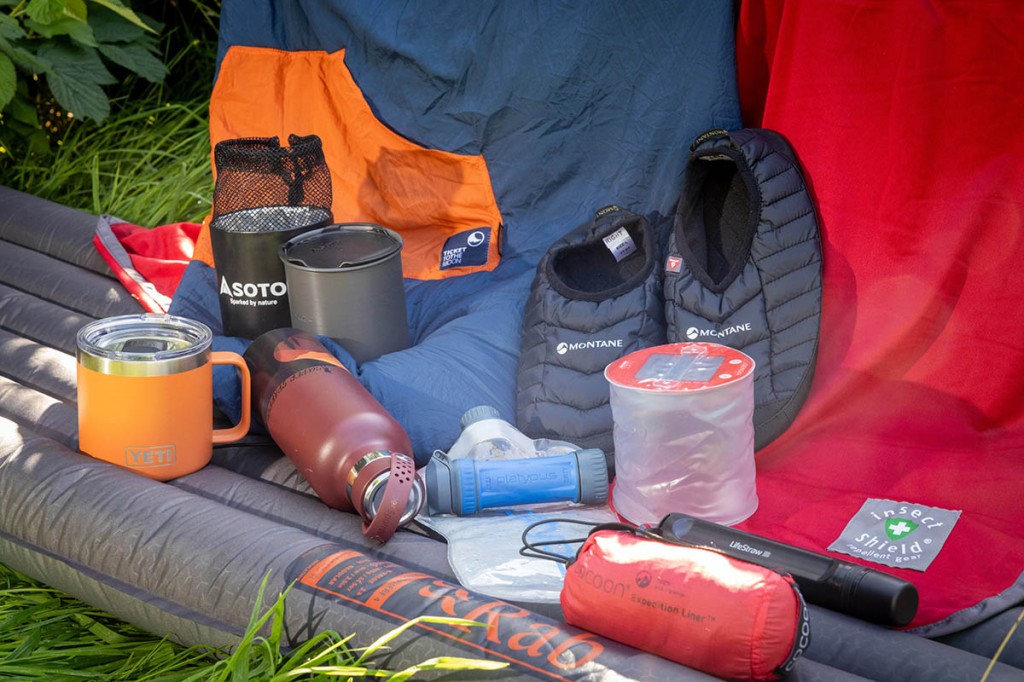
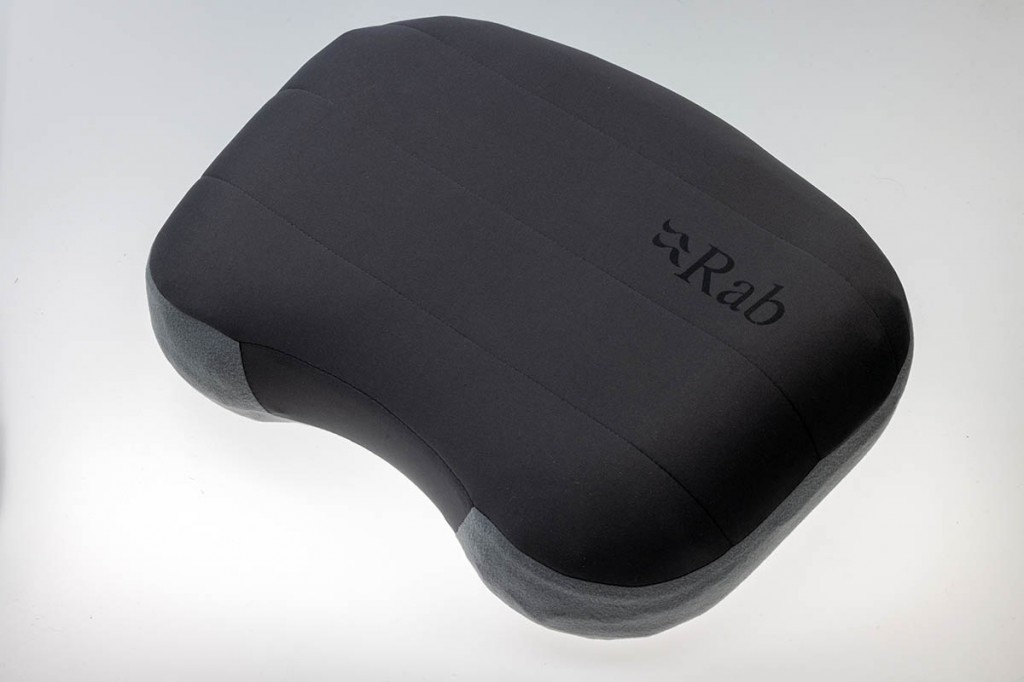
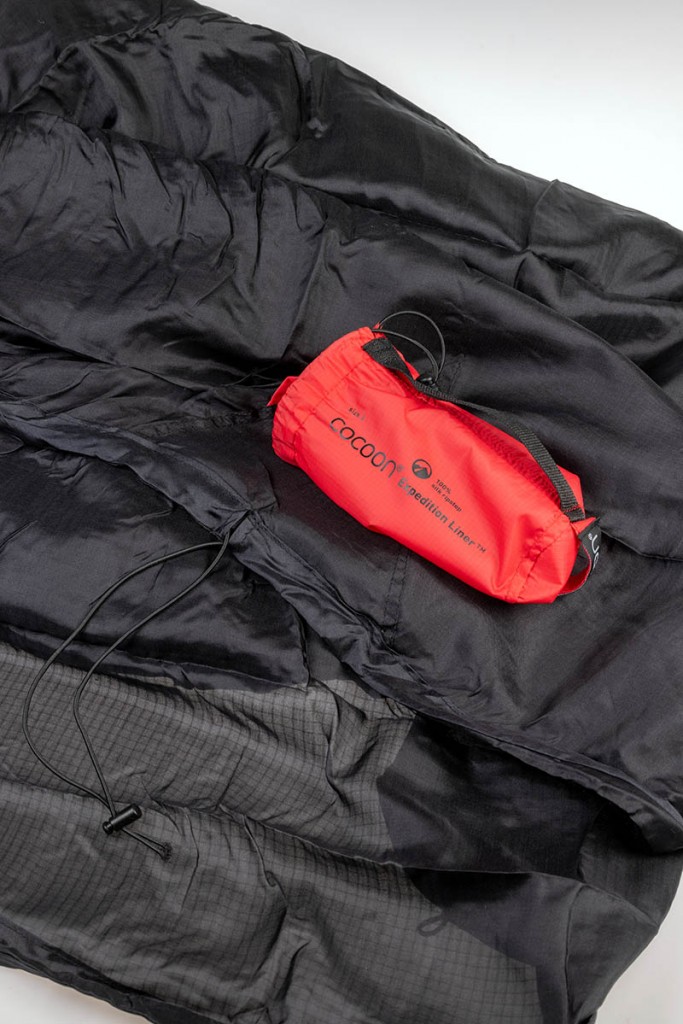
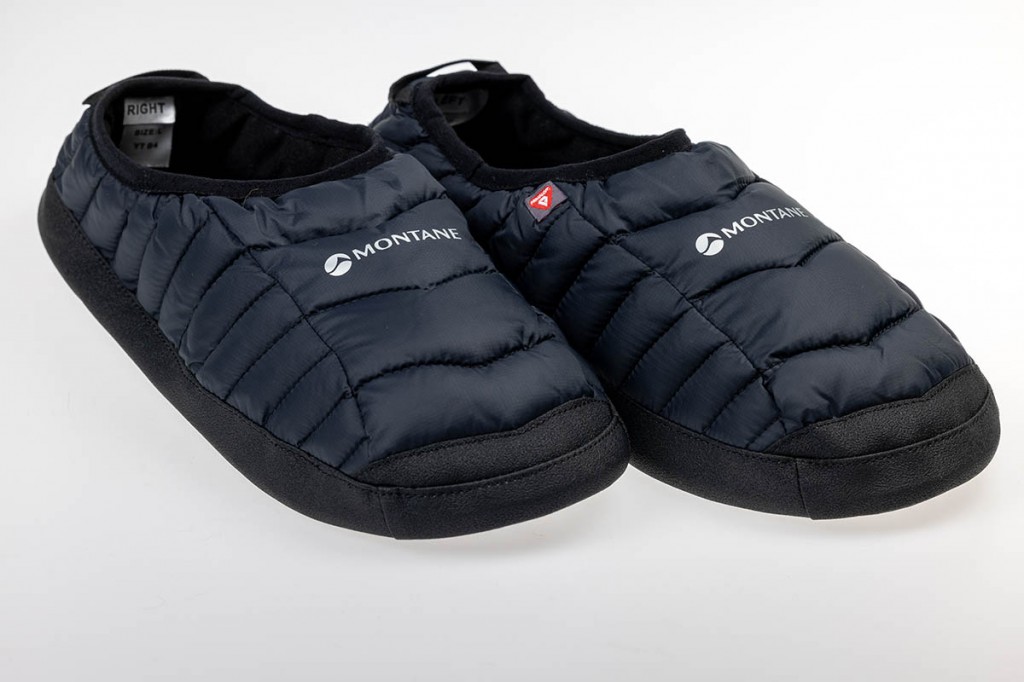
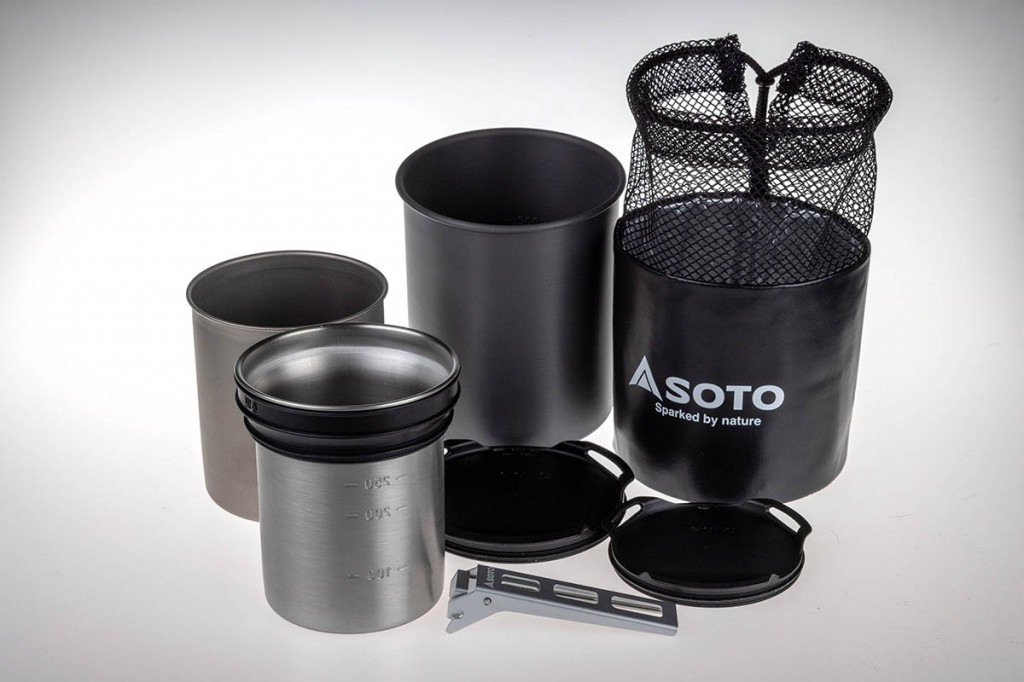
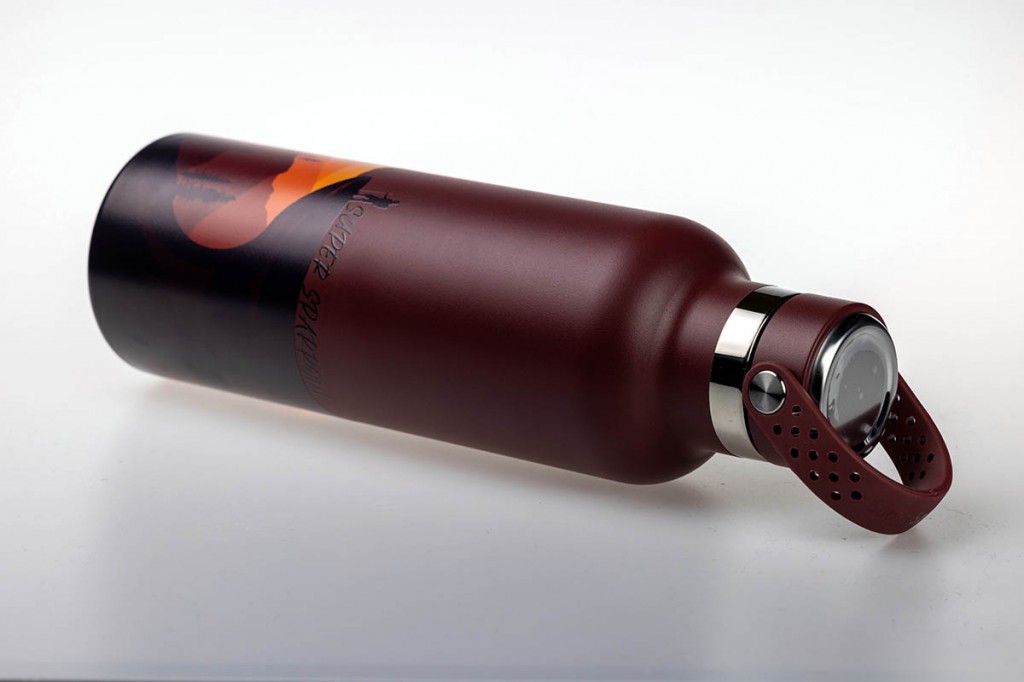
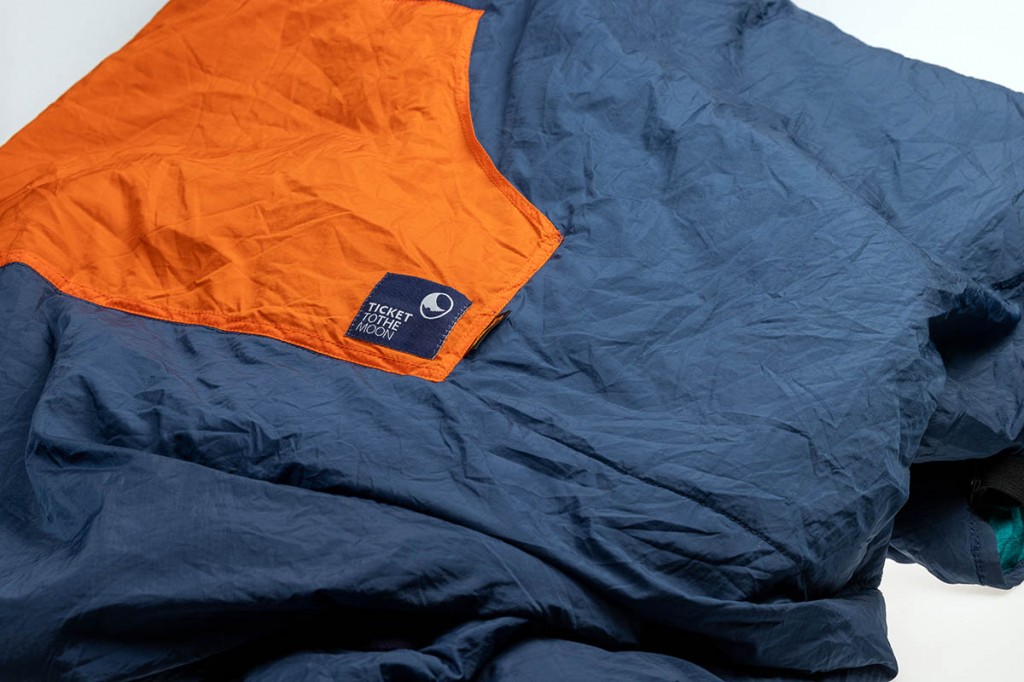
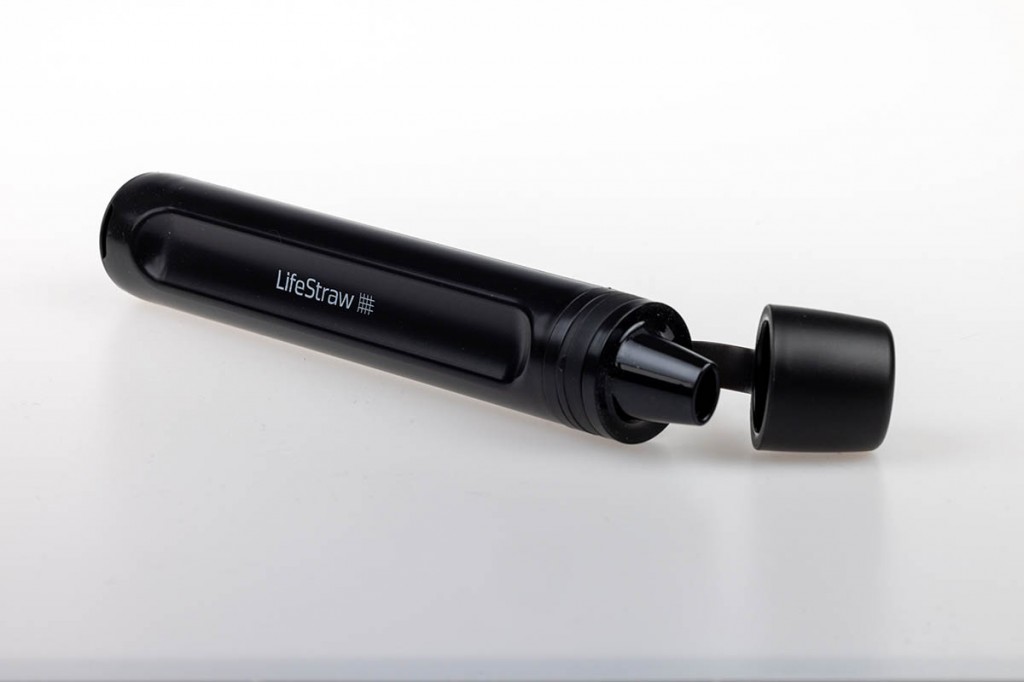
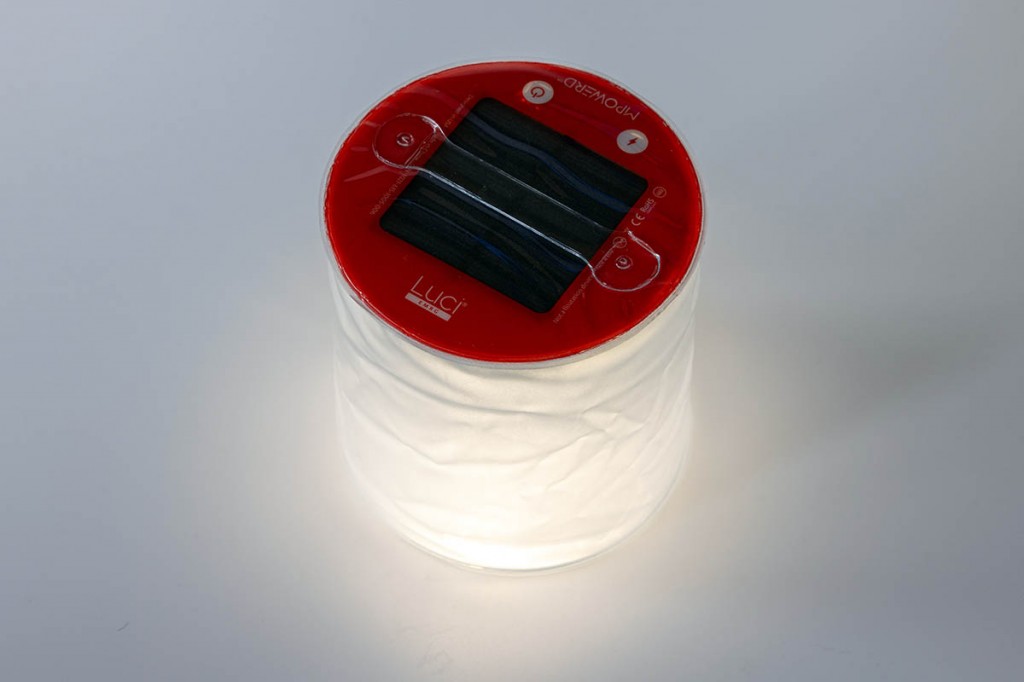
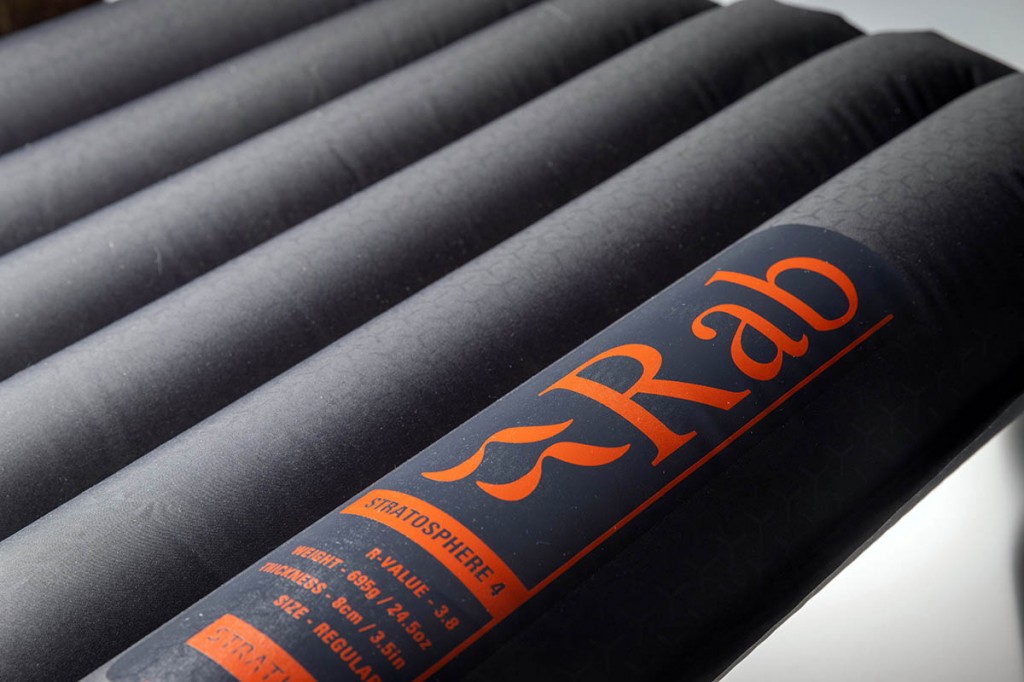
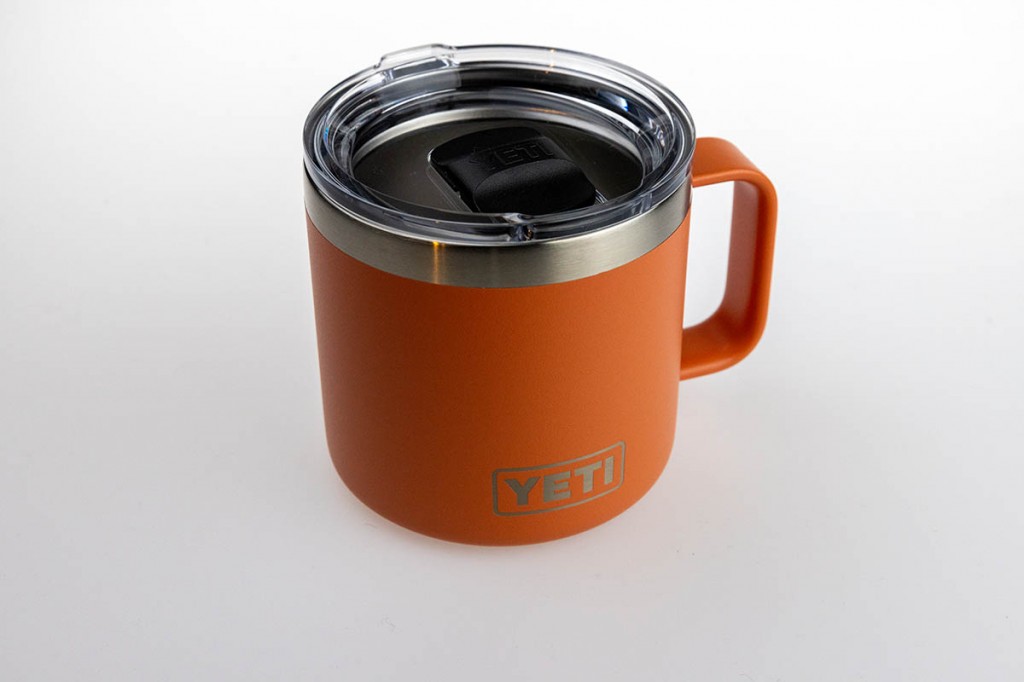
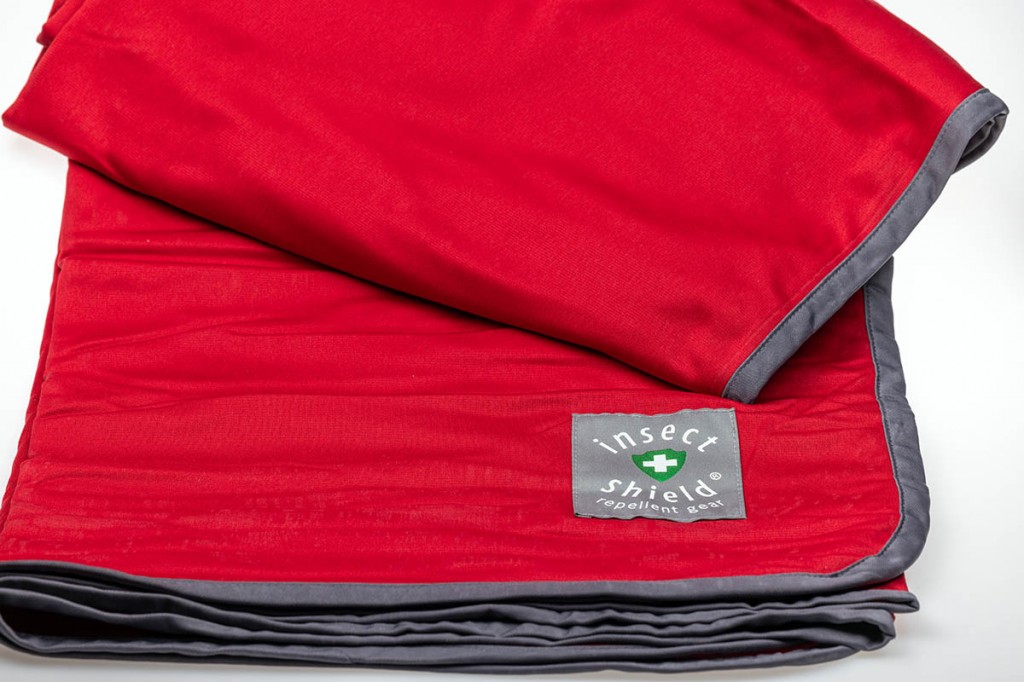
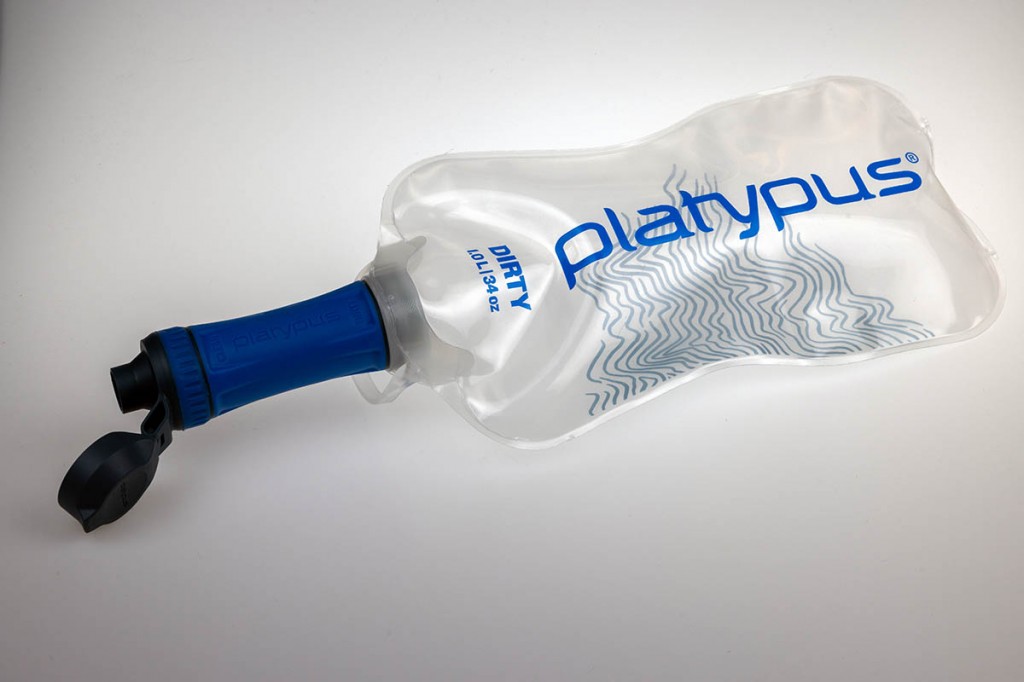
Jrt
27 August 2023Hardly a balanced article. You've just reviewed stuff you've been given and discounted the fact there are far better (and much more lightweight) products out there in every category.
If you want a top end lightweight bottle for hiking, you don't pick one that weighs well over 300g. You pick a Nalgene HDPE at 100g.